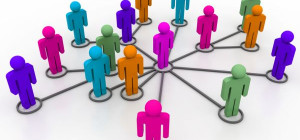 Client meetings have enormous potential. It’s your opportunity to make a good impression and build your client relationships, and it’s also your best chance at capturing the specs you need to execute your next project efficiently.
Client meetings have enormous potential. It’s your opportunity to make a good impression and build your client relationships, and it’s also your best chance at capturing the specs you need to execute your next project efficiently.
How you take notes will impact how you’re able to remember each client meeting, and how efficiently you’re able to execute the next stages of your work. Fortunately, there are some strategies that can help you perfect the process.
Taking Better Meeting Notes
Try using these strategies to take notes in your next client meeting:
- Write, rather than typing. It may be tempting to bring a laptop or tablet into the meeting or to set up a voice recorder and objectively record the whole thing, but it’s far better for your memory retention if you write your notes instead. Researchers aren’t sure why, but the physical process of writing things down helps you retain the information better—which is crucial if you want to remember the key details of your meeting long after the session is over. Writing also gives you more flexibility for things like arrows, diagrams, and doodles to capture abstract imagery.
- Print your own notepads. Long before the meeting, consider printing your own notepads, custom branded with your company’s logo. These custom notepads will serve a handful of different purposes. First, they’ll encourage you to take more notes by hand (since you’ll have invested in them). Second, they’ll show to your client that your company is to be taken seriously. And third, you can use the notepads as a kind of giveaway or corporate gift, which will make a better impression with the client and keep your brand top-of-mind.
- Prepare before the meeting. You should start taking notes before the meeting. In your notepad, or wherever you take notes, write down the date, time, and name of the client you’re meeting with. If you have an agenda, you may want to jot that down too. Most importantly, structure the layout of your page to make it easier to take notes as you navigate through different conversational topics; this will give you a runway to build momentum with.
- Develop shorthand. If you have the time, you can learn shorthand—though many different types of shorthand exist—or you can create your own. Essentially, shorthand serves as a way to hasten your ability to write notes, abbreviating common words and phrases, and sometimes letters themselves, to be quickly transcribed. You can always expand upon your notes later. This is critical if you want to get down complete ideas without getting distracted and missing an important part of the meeting.
- Avoid transcribing. When most people start taking notes in meetings, they’re tempted to transcribe what’s being said, almost verbatim. That way, they have an objective record of what was said. However, it’s usually better if you focus on jotting down the core ideas behind what’s being said, and your own personal takeaways. This process is much faster, so you’ll be able to keep up with the conversation, and it will make your notes more relevant to you later on; you won’t have to course through endless pages of conversation to find that one phrase that’s important to get your job done.
- Don’t worry about keeping things organized. While it’s helpful to have some kind of structural framework in place when you start, don’t worry too much about keeping your notes organized. Instead, write your ideas down however they come to you. You can always trim, edit, and rearrange things later.
- Expand on your notes immediately after the meeting. It’s a good idea to revisit your notes immediately after the meeting is over, while your memories of the meeting are still fresh. This will help you reinforce the most important parts of your meeting, identify areas you missed, and allow you to edit or expand upon areas that you weren’t able to capture fully the first time around.
Sharing Your Best Strategies
Once you find a collection of tactics that work well for you, don’t keep the secret to yourself. Make sure your employees and coworkers are equipped with the materials and tactics they need to take good notes as well. With your entire team functioning as a collective unit, your meetings will run much smoother—and you’ll walk away with better-organized information you can use to make your clients happier.







